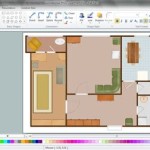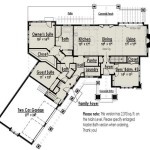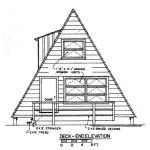How To Obtain a House Plan for Your House
Securing a house plan is a fundamental step whether you are undertaking renovations, building an extension, or simply aiming to understand the original design and layout of your property. The process of obtaining house plans can vary depending on the age of the house, location, and the specific nature of the information required. This article outlines the various avenues and considerations involved in acquiring this vital documentation.
Understanding the Importance of House Plans
House plans are more than just diagrams; they are comprehensive blueprints that detail the architectural and structural elements of a building. These plans typically include floor plans, elevations, site plans, sections, and detailed specifications regarding materials and construction methods. Having access to these plans provides numerous benefits. For renovation projects, they offer a clear understanding of existing structural components, plumbing, electrical wiring, and other essential systems. This knowledge is crucial for avoiding costly mistakes and ensuring that any changes comply with building codes and regulations. For homeowners seeking to build an extension, existing house plans can serve as a foundational document, informing the design process and ensuring seamless integration with the existing structure. Moreover, house plans can be invaluable for property valuation, insurance purposes, and resolving disputes with neighbors regarding property lines or easements.
Furthermore, in the event of a natural disaster, house plans can expedite the insurance claim process and aid in the reconstruction efforts. They offer a definitive record of the original construction, allowing for accurate estimates of damage and necessary repairs. In some cases, historical house plans can even provide valuable insights into the architectural history of a neighborhood or region, contributing to a deeper appreciation of the built environment.
Methods for Acquiring House Plans
Several methods exist for obtaining house plans, each with varying degrees of accessibility and cost. The most effective approach will depend on the age of the house, the availability of records in the local jurisdiction, and the extent of the information desired. Here are some primary avenues to explore:
1. Local Government Departments and Archives
The first place to investigate is the local government's building department, planning department, or historical archives. These departments are often responsible for maintaining records of building permits, site plans, and other architectural documents submitted during the initial construction and subsequent renovations of a property. Building plans are frequently required as part of the permit process, and copies are often retained by the local government for archival purposes. The accessibility of these records can vary significantly between jurisdictions. Some local governments have digitized their records, allowing for online searches and downloads. Others may require in-person visits and physical searches of paper archives. It's essential to contact the relevant department directly to inquire about their procedures for accessing building plans and any associated fees.
When contacting the local government, provide as much detail as possible about the property, including the address, street name, block and lot number (if known), and the approximate year of construction. This information will help the department locate the relevant records more efficiently. Be prepared to provide proof of ownership, such as a property deed or tax bill, as access to building plans is often restricted to property owners or their authorized representatives. If the property is relatively new, chances are higher that plans are readily available. Older properties, on the other hand, may require more extensive research and the plans may be incomplete or damaged. Some older plans may predate modern building codes and standards, so understanding the historical context of the documentation is crucial.
2. Previous Owners or Builders
Another potential source of house plans is the previous owner of the property. They may have retained copies of the original plans or any subsequent renovation plans. Reaching out to the previous owner, if possible, can be a straightforward way to obtain the documentation. Similarly, if the original builder or architect is still in business, they may have copies of the plans in their records. Architects and builders often maintain archives of their past projects for reference and marketing purposes. Contacting them directly and providing the property address and date of construction may yield positive results. Even if they don’t have the complete original plans, they may have preliminary designs or drawings that could be useful.
However, it is worth noting that previous owners are not obligated to retain or provide house plans to new owners. Additionally, builders and architects may charge a fee for retrieving and providing copies of their archived plans. It is advisable to inquire about any associated costs before requesting the documentation. Furthermore, the quality and completeness of the plans obtained from previous owners or builders may vary. They may be faded, incomplete, or lacking in detail compared to official records held by local government departments.
3. Hiring a Professional Architect or Draftsperson
If other methods prove unsuccessful or the existing house plans are incomplete or outdated, engaging a professional architect or draftsperson may be the most viable option. These professionals can create new house plans based on a thorough survey and measurement of the existing structure. This process typically involves visiting the property, taking detailed measurements of all rooms, walls, windows, doors, and structural elements, and then drafting a set of plans that accurately reflect the existing layout and features. While this approach involves a significant investment of time and money, it provides the most accurate and comprehensive documentation of the house. It is particularly useful when embarking on major renovation projects where precise measurements and detailed structural information are essential.
When hiring an architect or draftsperson, it is crucial to select a qualified and experienced professional who is familiar with local building codes and regulations. Obtain quotes from several professionals and carefully review their portfolios and references before making a decision. The cost of creating house plans will vary depending on the size and complexity of the house, the level of detail required, and the professional's hourly rate. Be sure to discuss the scope of the project and the deliverables clearly with the architect or draftsperson before signing a contract. In addition to creating new plans, an architect or draftsperson can also assist with obtaining building permits and navigating the local government's approval process.
Key Considerations Before Searching for House Plans
Before embarking on the search for house plans, several key considerations should be taken into account. These considerations can help streamline the process, manage expectations, and ensure that the information obtained is accurate and relevant.
First, determine the specific purpose for which the house plans are needed. Are they required for a renovation project, an extension, insurance purposes, or simply for personal knowledge? The specific requirements will influence the level of detail and completeness required in the plans. For instance, if the plans are intended for a minor renovation, a basic floor plan showing the layout of rooms and dimensions may be sufficient. However, if the plans are intended for a major structural alteration or extension, more detailed plans showing structural components, plumbing, electrical wiring, and other essential systems will be necessary.
Second, establish a budget for acquiring the house plans. The cost of obtaining plans can range from minimal fees charged by local government departments to significant expenses associated with hiring an architect or draftsperson. Be prepared to pay for copies, search fees, or professional services. Factor in these costs when planning the overall budget for the project. If the budget is limited, prioritize searching for existing plans through local government departments and previous owners before considering the more expensive option of hiring a professional.
Third, understand the limitations of existing house plans. Plans obtained from local government departments or previous owners may be outdated, incomplete, or lacking in detail. Building codes and regulations may have changed since the original construction, so it is crucial to consult with a qualified professional to ensure that any renovations or extensions comply with current standards. Additionally, renovations or alterations may have been made to the house over the years that are not reflected in the existing plans. A careful inspection of the property and comparison with the plans is essential to identify any discrepancies.
Navigating Potential Challenges
The process of obtaining house plans can sometimes present challenges. Records may be lost, damaged, or incomplete. Local government departments may have limited resources or strict access policies. Previous owners may be uncooperative or unavailable. Architects and builders may charge high fees or have difficulty locating archived plans. It is important to be prepared to overcome these challenges and to persevere in the search for the necessary documentation.
When facing challenges, consider alternative strategies. If the local government department is unable to locate the original plans, inquire about related documents such as building permits, site plans, or property records. These documents may contain valuable information about the house's construction and layout. If previous owners are uncooperative, try contacting neighbors or local historical societies for information about the house's history. If architects or builders are unable to locate archived plans, explore other architects or builders who may have been involved in the original construction. If the cost of hiring a professional is prohibitive, consider creating a simple floor plan yourself using basic measuring tools and drafting software. While this approach may not be as accurate or detailed as professional plans, it can provide a useful starting point for planning renovations or extensions.
Maintaining detailed records of all communication and documentation obtained during the search process is crucial. Keep copies of all emails, letters, permits, plans, and other relevant documents. This documentation can be invaluable for resolving disputes, obtaining approvals, and ensuring that the renovation or extension project proceeds smoothly. Furthermore, be patient and persistent in the search for house plans. The process may take time and effort, but the benefits of obtaining accurate and comprehensive documentation are well worth the investment.

As Built Floor Plans

Design Your Own House Floor Plans Roomsketcher

Design Your Own House Floor Plans Roomsketcher

Design Your Own House Floor Plans Roomsketcher

Where You Can Buy House Plans Live Home 3d

Design Your Own Floor Plan With Our Free Interactive Planner Wayne Homes

How To Find The Original Floor Plans For Your House

How To Design A House From Sketch Reality
How To Find Floor Plans Or Blueprints For My House It S In And 30 Years Old Is There Someone Who Could Draw Me The If Originals Are Impossible

9 Ways To Find Floor Plans Of An Existing House Archid








